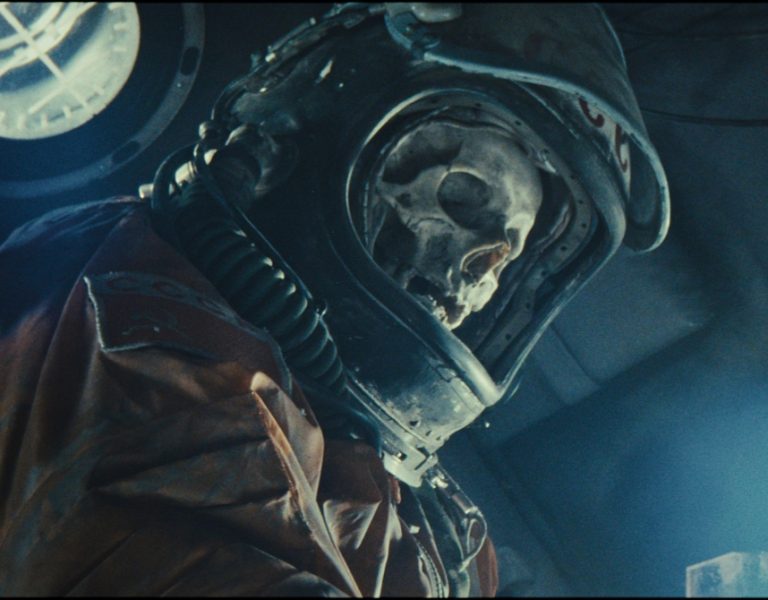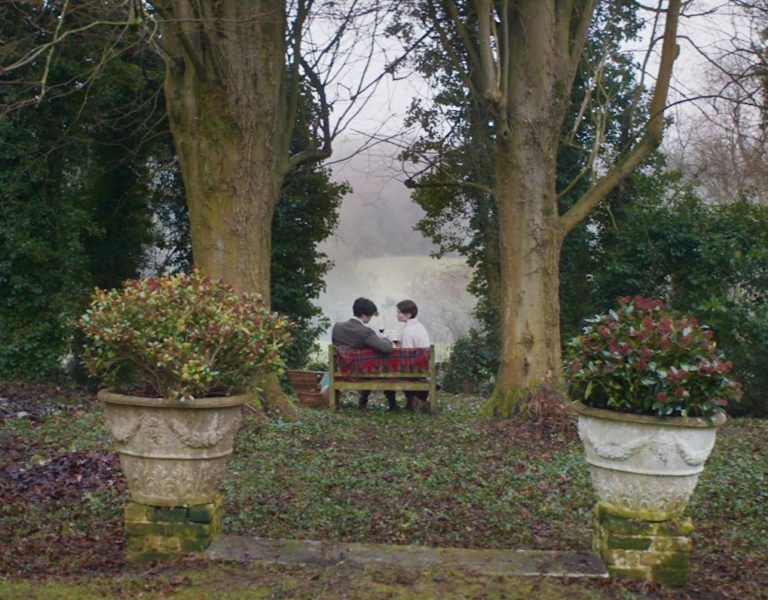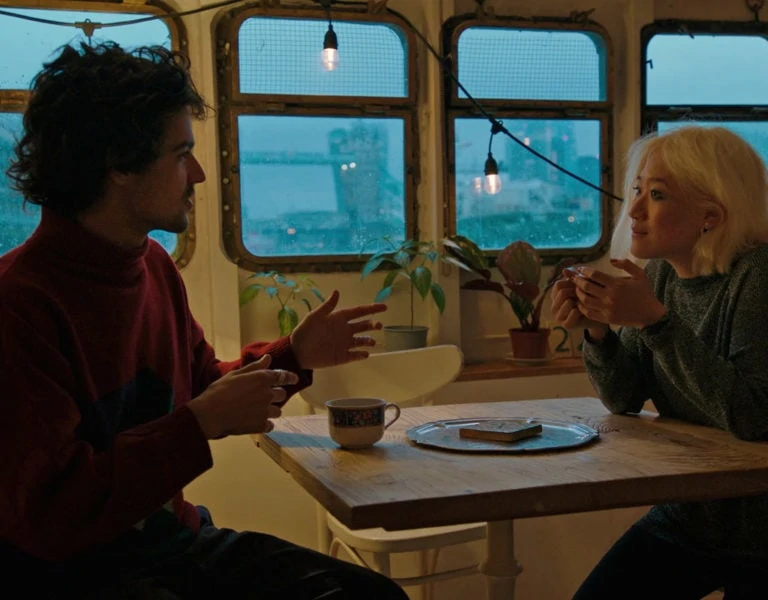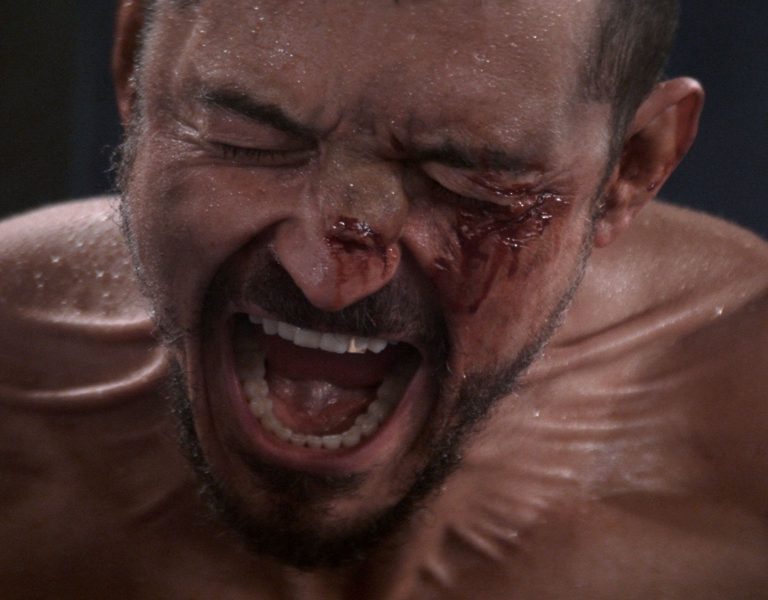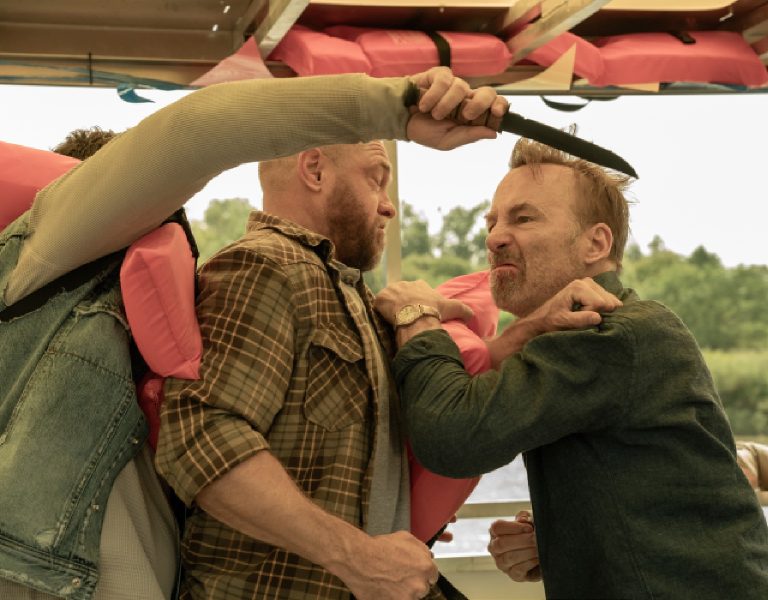CYCLE OF LIFE
To tell a story of risk, riders and renegades, writer-director Jeff Nichols and cinematographer Adam Stone hit the open road, drawing upon tried and tested techniques and exploring new expansive horizons to bring the lost era of a Midwestern motorcycle club back to life.
When approaching a new cinematic project, writer-director Jeff Nichols tries to find a universal theme, considering it to be the key to creating a “very personal, regionally specific film that feels totally unique to a specific time and place that still resonates with a broad and diverse audience”. This technique was essential when shooting his latest production The Bikeriders which saw him once again team up with Adam Stone, the cinematographer who has lensed all six of his features.
Following the rise of a fictional 1960s Midwestern motorcycle club through the lives of its members – including the dangers their lifestyle presents – the film was inspired by Danny Lyon’s iconic book of photography. The Bikeriders, Nichols believes, is about the “search for identity. It is very much about American, masculine identity, but only thinking of it in those terms misses a bigger idea. We are all desperate to find and build an identity for ourselves”.

In the search for a unique identity, the director believes “we very often turn to groups to help us define ourselves. It is human nature to want to belong, but that feeling is compounded when the group we choose to belong to is more unique. The more specific the group, the clearer the identity. In some instances, this can be a wonderful, powerful thing in our lives. In others, it can be terribly destructive. The Bikeriders represents both.”
The creative fuse for The Bikeriders was lit almost 20 years ago when Nichol’s brother Ben presented him with Lyon’s photographic history of a Midwestern outlaw motorcycle gang. Ben Nichols wanted to use Lyon’s photographs for his band Lucero’s album cover.
“Jeff introduced me to Danny Lyon’s book while colour-grading Loving. He intimated he wanted to make a movie inspired by his photography and we spent years discussing how to accomplish it,” says Stone, who having known Nichols for two decades, considers him a friend as well as a creative collaborator and artist. “The Bikeriders is just another project in our expanding body of work.”

Lyon’s book – a chronicle of the four years he spent with the Chicago Outlaws Motorcycle Club, interviewing and photographing longtime members – inspired Nichols to create a fictional narrative that incorporates characters based in part on some of the original bikers. Inspired by files of the original audio Lyon had recorded of interviews which had formed the text in his book, when Nichols considered how the story should be structured he felt Kathy (Jodie Comer) should narrate the story,
Through interviews with Kathy, interspersed throughout the film, The Bikeriders spans the years 1959 to 1973, immersing audiences in the subculture of ’60s motorcycle riders. It chronicles the evolution of the Vandals biker group Kathy joins when she falls in love with wild and reckless bikerider Benny (Austin Butler).
Stone’s first query was whether Nichols envisaged the film in black-and-white or colour. The writer-director was immediately set on colour as he felt it would “best deliver the emotional connective tissue between the audience and the film”.

Film was a no-brainer for the pair, with Stone stating he does not think “Jeff would ever shoot on digital, even if his life depended on it”. Although the cinematographer also shoots digital projects, he felt film added an authenticity, “a rough-hewn quality, not possible to achieve with digital, that helped ground the film in the ‘60s era”. Sometimes when shooting nighttime sequences they pushed the boundaries of what film could capture but that married with some shots in Lyon’s book which were occasionally underexposed or overexposed.
The filmmakers deliberated over whether to shoot 35mm or 65mm but “once the project was greenlit, production came fast and heavy. We had a truncated prep, and tight shoot schedule, so were apprehensive about shooting 65mm,” says Stone. “So we opted to shoot 35mm anamorphic with the same camera system and lenses we usually use.”
The Panavision Millennium XL has been the system of choice on all of their collaborations due to being “a relatively compact workhorse that has never let them down”. They once again selected Panavision G-Series lenses – which they first used on Mud – with some T-Series as they “love combining the lenses with shooting celluloid”. Besides neutral density filters, Stone did not work with correction filters or polarisers. Instead he did most of the tweaks in the grade.

He endeavoured to shoot day work with the “gorgeous” Kodak Vision3 250D 5207 as much as possible – sometimes pushing it a little when shooting interior scenes – while night work was captured on Vision3 500T 5219.
“The Vandals bar was a tricky place to shoot day interiors, but we used 5207 as much as possible,” says Stone. “The bar had a pretty radical look. It was a very high contrast set. If we filmed near the entrance we needed a tonne of fill light to compete with translucent glass tile while the back of the bar was quite inky. There were no windows or convenient areas to hide lights, so we were kind of hamstrung. But that’s what’s fun about shooting in real locations. They are often tricky to light but provide for an authentic look that’s hard to achieve on stage.”
When there was space to set-up lighting equipment, Stone relied upon the ingenuity and skill of friend and a talented craftsman he considers “one of the best gaffers on the planet”, Michael Roy (Mud, Wild). “He sees photons and is a lighting wizard,” says the cinematographer. “For many of the night scenes Michael implemented 20K tungsten fresnels, old school fixtures you don’t see often on present day LED laden film sets. That’s what makes Michael’s work so special. He has an uncanny mastery of light. He makes artifice beautiful and natural.”
Lighting solutions Roy presented for environments encountered included tungsten fixtures to emulate motorcycle headlights, ARRI SkyPanel S360-C for some day work in the bar, and Creamsource Vortexes as streetlamps outside the bar.

Influential imagery
Much of the movie’s look was motivated by Lyon’s work but Stone was also captivated with Jim Miteff’s photography. “I thought his work was grittier and more deconstructed than Lyon’s. Miteff’s imagery really helped me understand the biker subculture. This influenced how I imagined sets, lighting, costuming, even the dirt level under the talent’s fingernails.
“We didn’t want the film to look too polished or feel saccharin since all the visual references Jeff and I collected were very rough and tumble. We weren’t making a sci-fi movie and having to build an entire universe out of thin air. Instead, The Bikeriders universe was already built, we just had to faithfully follow the road map set forth by Lyon and execute it in a compelling story.”
Many of Lyon’s shots were not the same aspect ratio as the cinematic imagining of The Bikeriders, and as most of his photographs were vertical they did not influence the framing. “It was the same when we shot Loving,” says Stone. “That was influenced by images captured by photographer Grey Villet for Life magazine which were vertical and a different aspect ratio to what we shot.”

Due to the number of sequences involving period-correct bikes, weeks of prep was dedicated to determining how to film the bikers on their beloved vehicles. As none of the actors would be wearing helmets, the crew went through many iterations of solutions to allow them to achieve this in the safest and most effective manner.
“To convincingly shoot talent riding old Harleys was daunting. We went through a variety of different methodologies before arriving on something that looked genuine and felt interpersonal,” says Stone. “We needed to get the camera close enough to the talent so the audience felt what the rider was experiencing. An E-bike chasing the hero bike felt clunky and detached. Then we mounted a camera to the front of a trike, and shot the rider from the elbows up. This was a vast improvement, but the camera lacked movement and felt fake.”
Stone and Nichols had a eureka moment when experimenting with shooting handheld on a trike with the camera three feet from the talent, allowing the audience to “truly experience what it felt to ride a motorcycle ”. The approach to shooting motorcycle sequences was also influenced by how the characters needed to be introduced to the story. “Some of the actors were experienced riders. We knew Tom Hardy [the leader of the Vandals] could ride a motorcycle, so we could photograph him multiple ways – on a trike shooting handheld or full body from a pursuit car,” says Stone. “We had a checklist of talent who could ride, who were mediocre, and who couldn’t ride.”

Key story points also drove the approach to capturing motorcycle-based action. Kathy and Benny needed to ride together on a bike because that is how they first fell in love. “So the bridge sequence had to be a magical for Kathy. We shot the couple handheld on the trike and were able to grab some intimate singles of Kathy taking in the environment. That was a transformative moment for her when she falls in love with Benny and becomes part of the gang.”
Not wanting to shoot all riders from the waist up on a trike, Stone sometimes captured shots of the whole gang from a pursuit vehicle. “There were a few ambitious sequences when the pursuit vehicle pulled Austin, Tom and about 30 stunt riders in relatively close formation. Any wrong move could have been catastrophic, but safety was at the forefront at all times, and overseen by motorcycle consultant and co-stunt coordinator Jeff Milburn.”
Nichols agrees the most accurate way to represent riding was to film the scenes with a handheld camera and stands by this method for car interiors as well. “In a car, you can place the camera operator in one of the seats, but this isn’t possible on a motorcycle. The solution of a three-wheeled camera trike that could support platforms off the sides, back and front allowed us to place our camera operator on the front of the bike with a handheld rig,” he says. “However, it required our actor to operate the trike while performing and still managing not to wreck. When combined with free riding shots of our actors on real, period-correct bikes, this footage seemed the most accurate to the experience we were trying to replicate.”
Hardy’s ability to ride a motorcycle was not the only skill that benefitted the shoot; he is also an accomplished fighter. “Tom had a number of fight sequences in the movie and his knowledge of Jiu-Jitsu was a great asset. He really helped us figure out what punches and moves looked best on camera,” says Stone. “When shooting a very cold and wet fight scene, while the crew was sporting Canada Goose jackets, Tom seemed impermeable to the elements only dressed in a t-shirt. He’s definitely a unique actor that brings a lot to a project.”

A naturalistic approach
Despite the story progressing through the decades, Stone and Nichols did not want to alter the look and feel. “Even during the grade, with the talented colourist Mitch Paulson, we didn’t want to do anything to differentiate the time periods of the story. We implemented the same approach on Loving – keeping the visuals simple, naturalistic, and consistent.”
The filmmakers aimed to move the camera and incorporate handheld more than on their previous movies to create a more grounded feel. As Lyon had also predominantly shot the photographs in the book handheld, Stone wanted to inject a similar movement into the movie and for it to feel more documentary-like. He felt a handheld approach would offer more freedom and trusted “good friend and superb” A Camera operator, Rod Calarco to achieve this.
“We put Rod in every handheld situation imaginable – strapped to the front of a trike, stuck in back seat of cars, and in the middle of giant fight scenes. Occasionally Jeff wanted the camera more stabilised but we usually aimed for a documentary feel,” says Stone. “One decision, which some may not expect, was to shoot the majority of Lyon’s interviews with the gang in studio-mode and not handheld.”

To achieve a ‘60s-era look, the film was shoot entirely on location in Ohio and Kentucky. “Often when shooting a period piece filmmakers affect the look of the visual in post to make it feel dated or rely on CGI,” says Stone. “That’s just not in our DNA. Jeff and I prefer to find era specific locations that heighten the look of the film. That coupled with amazing art direction and costuming really makes for compelling visuals.”
An extensive search was conducted to find the ideal location for the Vandals clubhouse bar which saw an existing corner storefront transformed by production designer Chad Keith who has worked on four of Nichols’ films. “The floors were vintage linoleum designs they had scanned and reprinted. The glass block exterior was built from a photo reference of the original. The actual bar inside was shipped in from another state,” explains Nichols. “The light fixtures, liquor bottles, jukebox and pinball machines, everything was brought in and made to look like it had been there forever. It all feels so real that it becomes an invisible hand carrying us through the film. The Stoplight bar was one location. We had over forty in the film.”
They also needed environments in which to shoot a controllable neighbourhood that looked like it was in the ‘60s, complete with street corners that had an intersection where we could see far in either direction. As Lyon shot in the flat area of Chicago, the team needed to find roads with expansive horizons for sequences of the group of bikeriders. “We wanted to emulate that through shots where you could see a large amount of sky and land in either direction,” says Stone.

Their search for an area to match Lyon’s still images of a dirt track proved fruitful when they stumbled upon a near match an hour and a half outside Cincinnati, near a town called Blanchester, Ohio. “It was a very distant location but worth the drive and truncated shoot day,” says Stone. “Most of the dirt track racing sequences were captured by our second unit DP Neil Moore. He did a great job that day filming with limited resources and erratic weather conditions.”
Stone and Nichols’ filmmaking journey, from Shotgun Stories (2007) and Take Shelter (2011) through to Mud (2012) and Midnight Special (2016) has been a “very organic process” of constant evolution that has allowed them to create a visual signature. “While we approach each film in a similar fashion – utilising the same camera system, lenses, and stock – every production elevates our storytelling with unique and exciting obstacles,” says Stone.
“With Mud it was, ‘You can’t travel down the Mississippi River and put a 30’ boat on the bow of an old oak tree.’ And we were like, ‘Yes, we can.’” And on Bikeriders it was, ‘You can’t have some of the best actors in the world riding around on vintage motorcycles without helmets.’ And we were like, ‘We can figure it out.’ We have such a talented crew, that has been with us for a long time, and when you have access to such an exceptionally gifted team you can overcome any challenges to make an immersive story that resonates with the audience.”




